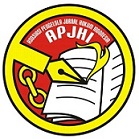The Ius Constituendum of Inter-agency Synergy Arrangements Related to Natural Disaster Mitigation and Action
 ), Ahmad Zubir Ibrahim(5)
), Ahmad Zubir Ibrahim(5)
(1) Faculty of Social and Political Sciences Slamet Riyadi University, Surakarta, Indonesia
(2) Faculty of Social and Political Sciences Slamet Riyadi University, Surakarta, Indonesia
(3) Faculty of Social and Political Sciences Slamet Riyadi University, Surakarta, Indonesia
(4) Faculty of Social and Political Sciences Slamet Riyadi University, Surakarta, Indonesia
(5) Utara Malaysia University, Kuala Lumpur, Malaysia
 Corresponding Author
Corresponding Author
Abstract
Introduction: Natural disasters cause resource destruction and social threats. The synergy of important institutions is facing impact. Indonesia is prone to natural disasters due to volcanic eruptions, earthquakes, etc. Climate change and urbanization are exacerbating the situation. Effective law is needed, including institutional synergy, for disaster mitigation and prosecution.
Purposes of the Research: To gain a deeper understanding of inter-agency synergies in dealing with natural disasters in Indonesia, as well as to contribute to the development of a better and more effective legal framework for mitigating and overcoming natural disasters. Implementation of a more solid and coordinated legal framework is expected to increase the efficiency and effectiveness of natural disaster mitigation and prosecution efforts.
Methods of the Research: This study uses a qualitative normative research method with a statutory approach. The collection of legal materials involves laws, government regulations, regional regulations, government policies, court decisions, as well as legal literature such as articles, journals and books. The analysis is carried out by identifying and selecting relevant regulations, categorizing issues related to institutional roles, resources, and responsibilities.
Results of the Research: Synergy between agencies is the main key in a rapid and coordinated response to natural disasters. Several related institutions have been assigned to deal with disasters, but the implementation of existing laws and regulations needs to be evaluated and improved. In facing this challenge, the Ius Constituendum concept can be applied to strengthen inter-agency synergies related to natural disaster mitigation and prosecution. In implementing the Ius Constituendum concept, the involvement of all stakeholders and an intensive dialogue process are very important to ensure that the laws and regulations that are implemented are in accordance with the needs and conditions that are developing. By formulating and implementing the Ius Constituendum concept correctly, inter-agency synergy in managing natural disasters in Indonesia can be increased.Keywords
DOI
10.47268/sasi.v29i4.1736
Published
2023-10-30
How To Cite
@article{SASI1736,
author = {Joko Pramono and Maya Wangi and Josef Setiodjati and Dora Kusumastuti and Ahmad Ibrahim},
title = {The Ius Constituendum of Inter-agency Synergy Arrangements Related to Natural Disaster Mitigation and Action},
journal = {SASI},
volume = {29},
number = {4},
year = {2023},
keywords = {Ius Constituendum; Mitigation; Synergy; Natural Disasters.},
abstract = {Introduction: Natural disasters cause resource destruction and social threats. The synergy of important institutions is facing impact. Indonesia is prone to natural disasters due to volcanic eruptions, earthquakes, etc. Climate change and urbanization are exacerbating the situation. Effective law is needed, including institutional synergy, for disaster mitigation and prosecution.Purposes of the Research: To gain a deeper understanding of inter-agency synergies in dealing with natural disasters in Indonesia, as well as to contribute to the development of a better and more effective legal framework for mitigating and overcoming natural disasters. Implementation of a more solid and coordinated legal framework is expected to increase the efficiency and effectiveness of natural disaster mitigation and prosecution efforts.Methods of the Research: This study uses a qualitative normative research method with a statutory approach. The collection of legal materials involves laws, government regulations, regional regulations, government policies, court decisions, as well as legal literature such as articles, journals and books. The analysis is carried out by identifying and selecting relevant regulations, categorizing issues related to institutional roles, resources, and responsibilities.Results of the Research: Synergy between agencies is the main key in a rapid and coordinated response to natural disasters. Several related institutions have been assigned to deal with disasters, but the implementation of existing laws and regulations needs to be evaluated and improved. In facing this challenge, the Ius Constituendum concept can be applied to strengthen inter-agency synergies related to natural disaster mitigation and prosecution. In implementing the Ius Constituendum concept, the involvement of all stakeholders and an intensive dialogue process are very important to ensure that the laws and regulations that are implemented are in accordance with the needs and conditions that are developing. By formulating and implementing the Ius Constituendum concept correctly, inter-agency synergy in managing natural disasters in Indonesia can be increased.},
issn = {2614-2961}, pages = {765--776} doi = {10.47268/sasi.v29i4.1736},
url = {https://fhukum.unpatti.ac.id/jurnal/sasi/article/view/1736}
}
Journal Article
Anggono, Bayu Dwi. “Harmonisasi Peraturan Perundang-Undangan Di Bidang Penanggulangan Bencana.” Mimbar Hukum - Fakultas Hukum Universitas Gadjah Mada 22, no. 2 (2010): 373–90.
Cornell, Anna Jonsson, and Janne Salminen. “Emergency Laws in Comparative Constitutional Law – The Case of Sweden and Finland.” German Law Journal 19, no. 2 (May 1, 2018): 219–50. https://doi.org/10.1017/S2071832200022677.
Disantara, Fradhana Putra. “TANGGUNG JAWAB NEGARA DALAM MASA PANDEMI COVID-19.” JCH (Jurnal Cendekia Hukum) 6, no. 1 (September 30, 2020): 48–60. https://doi.org/10.33760/jch.v6i1.262.
Flora, Henny Saida, Fradhana Putra Disantara, and Mac Thi Hoai Thuong. “The Lex Favor Reo Principle After New Criminal Code: A Corrective Justice’s Perspective.” Pena Justisia: Media Komunikasi Dan Kajian Hukum 22, no. 2 (2023): 67–80.
Goldstein, Neal D., and Joanna S. Suder. “Application of State Law in the Public Health Emergency Response to COVID-19: An Example from Delaware in the United States.” Journal of Public Health Policy 1, no. 1 (September 28, 2020): 1–9. https://doi.org/10.1057/s41271-020-00257-8.
Haeril, Haeril, Mas’ud Mas’ud, Taufik Iradat, and Hendra Hendra. “Penerapan Kebijakan Mitigasi Bencana (Fisik Dan Nonfisik) Dalam Mengurangi Risiko Bencana Di Kabupaten Bima.” Journal of Governance and Local Politics (JGLP) 3, no. 1 (May 2021): 23–47. https://doi.org/10.47650/jglp.v3i1.179.
Kurniawan, I Gede Agus, Lourenco de Deus Mau Lulo, and Fradhana Putra Disantara. “IUS Constituendum of Expert Advisor in Commodity Futures Trading: A Legal Certainty.” Jurnal IUS Kajian Hukum Dan Keadilan 11, no. 1 (2023): 31–45. https://doi.org/https://doi.org/10.29303/ius.v11i1.1170.
Raharjo Jati, Wasisto. “Analisis Penanggulangan Bencana Berbasis Perspektif Cultural Theory.” Jurnal Dialog Penanggulangan Bencana 4, no. 1 (2013): 1–12.
Rahmat Riadi. “STRATEGI PENANGANAN BENCANA NON-ALAM COVID-19 DALAM PEMILIHAN SERENTAK 2020.” Electoral Governance Jurnal Tata Kelola Pemilu Indonesia 2, no. 2 (May 2021): 141–61. https://doi.org/10.46874/tkp.v2i2.205.
Ramdani, Endah Mustika. “Koordinasi Oleh BPBD Dalam Penanggulangan Bencana Banjir Di Kabupaten Bandung.” Jurnal Ilmu Administrasi XII, no. 3 (2015): 383–406.
Rengganis, Annisa. “Aksi Dan Koordinasi Badan Penanggulangan Bencana Daerah (Bpbd) Kabupaten Kuningan Pada Tahap Mitigasi Bencana.” SOSFILKOM : Jurnal Sosial, Filsafat Dan Komunikasi 14, no. 01 (2020): 1–8. https://doi.org/10.32534/jsfk.v14i01.1509.
Sosiawan, Edwi Arief. “Model Ideal Manajemen Teknologi Informasi Dan Komunikasi Dalam Mendukung Operasional Penanganan Bencana Alam.” JURNAL IPTEKKOM : Jurnal Ilmu Pengetahuan & Teknologi Informasi 17, no. 2 (2015): 175. https://doi.org/10.33164/iptekkom.17.2.2015.175-188.
Statistisi, Suprapto, and Pusdatinmas Bnpb. “Analisis Kesiapsiagaan Masyarakat Kota Padang Dalam Menghadapi Bencana Alam.” Jurnal Dialog Penanggulangan Bencana 6, no. 2 (2015): 116–27.
Suliyati, Titiek. “Menyelamatkan Arsip Dari Bencana : Antara Idealisme Dan Realitas.” Lentera Pustaka: Jurnal Kajian Ilmu Perpustakaan, Informasi Dan Kearsipan 3, no. 2 (2017): 141. https://doi.org/10.14710/lenpust.v3i2.16738.
Taufiq, Muchamad, and Fradhana Putra Disantara. “The Principle of People’s Authoritative Manifestation in Mining Management: An Inclusive Legal Perspective.” SASI 29, no. 3 (June 12, 2023): 442. https://doi.org/10.47268/sasi.v29i3.1329.
Book
Eko Listiyani et.al. Filsafat Hukum Pancasila: (Kajian Hukum, Politik, Dan Hak Asasi Manusia). Edited by Hafidz El Hilmi Dicky Eko Prasetio, Fradhana Putra Disantara, Maydinah Syandra. 1st ed. Bantul: CV MEGALITERA, 2020.
Greene, Alan. Permanent States of Emergency and the Rule of Law: Constitutions in an Age of Crisis. New York: Bloomsbury Publishing, 2018.
Marzuki, Peter Mahmud. Penelitian Hukum: Edisi Revisi. 13th ed. Jakarta: KENCANA, 2017.
Paripurno, Teguh Eko. “Manajemen, Modul Pengenalan, Bencana Untuk, Ancaman Bencana, Penanggulangan,” n.d., 1–41.
Sidiq, Umar, and Moh. Miftachul Choiri. Metode Penelitian Kualitatif Di Bidang Pendidikan. CV. Nata Karya. Ponorogo, 2019.
Supranto, Johannes. Metode Penelitian Hukum Dan Statistik. Jakarta: Rineka Cipta, 2003.
Warsono, Hardi, and Ahmad Buchari. Collaboration in Emergency Response. Trim Komunikata, 2019.
Wijayanto, Danang. Problematika Hukum Dan Peradilan. Jakarta: Sekretariat Jenderal Komisi Yudisial Republik Indonesia, 2014.
Thesis, Web Page, and Others
Badan Pengkajian MPR RI. Strategi Perampingan Dan Harmonisasi Regulasi Pusat Dan Daerah. Badan Pengkajian MPR RI, 2017.
KPUPR. “Modul 3 Konsep Dan Karakteristik Bencana.” Pusat Pendidikan Dan Pelatihan Sumber Daya Air Dan Kontruksi, 2017, 3–5.
Saparini, Hendri. “Analisa Atas Mekanisme Pengelolaan Bencana Dan Dana Bencana Di Indonesia,” 2012, 1–21.
Susanto, H. “Implikasi Pelaksanaan Pemerintahan Di Kabupaten Kampar Dalam Masa Pandemi Covid-19 Berdasarkan Undang Undang Nomor 23 Tahun 2014 Tentang …,” 2021.
| Dublin Core | PKP Metadata Items | Metadata for this Document | |
| 1. | Title | Title of document | The Ius Constituendum of Inter-agency Synergy Arrangements Related to Natural Disaster Mitigation and Action |
| 2. | Creator | Author's name, affiliation, country | Joko Pramono; Faculty of Social and Political Sciences Slamet Riyadi University, Surakarta; Indonesia |
| 2. | Creator | Author's name, affiliation, country | Maya Sekar Wangi; Faculty of Social and Political Sciences Slamet Riyadi University, Surakarta; Indonesia |
| 2. | Creator | Author's name, affiliation, country | Josef Purwadi Setiodjati; Faculty of Social and Political Sciences Slamet Riyadi University, Surakarta; Indonesia |
| 2. | Creator | Author's name, affiliation, country | Dora Kusumastuti; Faculty of Social and Political Sciences Slamet Riyadi University, Surakarta; Indonesia |
| 2. | Creator | Author's name, affiliation, country | Ahmad Zubir Ibrahim; Utara Malaysia University, Kuala Lumpur; Malaysia |
| 3. | Subject | Discipline(s) | |
| 3. | Subject | Keyword(s) | Ius Constituendum; Mitigation; Synergy; Natural Disasters. |
| 4. | Description | Abstract | Introduction: Natural disasters cause resource destruction and social threats. The synergy of important institutions is facing impact. Indonesia is prone to natural disasters due to volcanic eruptions, earthquakes, etc. Climate change and urbanization are exacerbating the situation. Effective law is needed, including institutional synergy, for disaster mitigation and prosecution.Purposes of the Research: To gain a deeper understanding of inter-agency synergies in dealing with natural disasters in Indonesia, as well as to contribute to the development of a better and more effective legal framework for mitigating and overcoming natural disasters. Implementation of a more solid and coordinated legal framework is expected to increase the efficiency and effectiveness of natural disaster mitigation and prosecution efforts.Methods of the Research: This study uses a qualitative normative research method with a statutory approach. The collection of legal materials involves laws, government regulations, regional regulations, government policies, court decisions, as well as legal literature such as articles, journals and books. The analysis is carried out by identifying and selecting relevant regulations, categorizing issues related to institutional roles, resources, and responsibilities.Results of the Research: Synergy between agencies is the main key in a rapid and coordinated response to natural disasters. Several related institutions have been assigned to deal with disasters, but the implementation of existing laws and regulations needs to be evaluated and improved. In facing this challenge, the Ius Constituendum concept can be applied to strengthen inter-agency synergies related to natural disaster mitigation and prosecution. In implementing the Ius Constituendum concept, the involvement of all stakeholders and an intensive dialogue process are very important to ensure that the laws and regulations that are implemented are in accordance with the needs and conditions that are developing. By formulating and implementing the Ius Constituendum concept correctly, inter-agency synergy in managing natural disasters in Indonesia can be increased. |
| 5. | Publisher | Organizing agency, location | Faculty of Law, Universitas Pattimura |
| 6. | Contributor | Sponsor(s) | Faculty of Social and Political Sciences Slamet Riyadi University, Surakarta; Utara Malaysia University, Kuala Lumpur |
| 7. | Date | (YYYY-MM-DD) | 2023-10-30 |
| 8. | Type | Status & genre | Peer-reviewed Article |
| 8. | Type | Type | |
| 9. | Format | File format | |
| 10. | Identifier | Uniform Resource Identifier | https://fhukum.unpatti.ac.id/jurnal/sasi/article/view/1736 |
| 10. | Identifier | Digital Object Identifier | 10.47268/sasi.v29i4.1736 |
| 11. | Source | Title; vol., no. (year) | SASI; Volume 29 Issue 4, December 2023 |
| 12. | Language | English=en | en |
| 13. | Relation | Supp. Files |
Cek Turnitin (3MB) |
| 14. | Coverage | Geo-spatial location, chronological period, research sample (gender, age, etc.) | |
| 15. | Rights | Copyright and permissions | Copyright: Authors who publish their manuscripts in this Journal agree to the following conditions: 1. The copyright in each article belongs to the author, as well as the right to patent. 2. Authors can enter into separate, additional contractual arrangements for the non-exclusive distribution of the journal's published version of the work (e.g., post it to an institutional repository or publish it in a book), with an acknowledgment of its initial publication in this journal. 3. Authors are permitted and encouraged to post their work online (e.g., in institutional repositories or on their website) before and during the submission process, as it can lead to productive exchanges, as well as earlier and greater citation of published work. 4. Authors have the right to self-archiving of the article (Author Self-Archiving Policy)
License: The SASI Journal is disseminated based on the Creative Commons Attribution-NonCommercial 4.0 International license terms. This license allows anyone to copy and redistribute this material in any form or format, compose, modify, and make derivatives of this material for any purpose. You cannot use this material for commercial purposes. You must specify an appropriate name, include a link to the license, and certify that any changes have been made. You can do this in a way that is appropriate but does not imply that the licensor supports you or your use.
|
Copyright (c) 2023 Joko Pramono, Maya Sekar Wangi, Josef Purwadi Setiodjati, Dora Kusumastuti, Ahmad Zubir Ibrahim

This work is licensed under a Creative Commons Attribution-NonCommercial 4.0 International License.

 : 1962 times
: 1962 times Download : 1046 times
Download : 1046 times
















